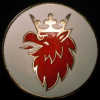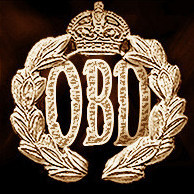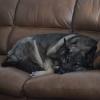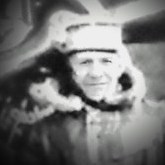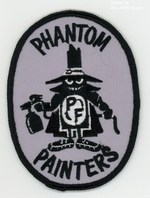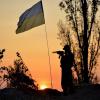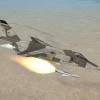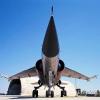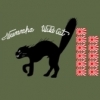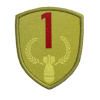Leaderboard
Popular Content
Showing most liked content on 04/26/2021 in Posts
-
9 pointsSome fun with Hawks on a custom and almost symmetric map im working on....
-
7 pointsIt is free. We currently are restricting downloads to recognized modders and subscribers of the site; CombatACE does have important costs for hosting files and all of the forums, and it's a "home" for us modders to discuss and work together. If it's not supported, eventually the site as we know it would disappear. We modders would like to keep this site alive. At some point it should be available for download to anyone, but it depends if you're willing to wait an as of yet indeterminate amount of time. A 1 month subscription to the site should be reasonable and grants you unrestricted number of downloads for all kinds of mods. Just to make things clear, we modders don't get any revenue from what we do and release here (and rightly so, we produce mods in our free time just for the passion and love of creating things and letting end-users enjoy them). All the money from subscriptions goes exclusively to cover the site's costs. The ODS 30AE total conversion is pretty much an extra for subscribers, you're paying for the subscription service, not for the mod and its contents; it currently is one of the most comprehensive and high quality freeware packages available for SF2. It is still being developed and improved, the current release is just v0.9 after all.
-
7 points
-
7 points
-
7 points
-
4 pointsThanks to Snapper21 Wrench Logan FM by ThirdWire Spitfire MkIIa : Still WIP but already very nice ! And I did almost nothing lol
-
4 pointsOn Saturday, 24 April 2021, the U.S. Coast Guard's last Hamilton-class cutter was decommissioned after 49 years of service. In ceremonies held at Coast Guard Base Kodiak, WHEC-724 USCGC Douglas Munro was removed from the list of active duty cutters as the last of the 378-foot cutters. This veteran of maritime security campaigns, drug interdiction, illegal migrant interceptions, fisheries patrols, high seas search and rescue efforts, and of Operations Iragi Freedom and Enduring Freedom was the tenth of twelve ships built during the late 1960's and early 1970's, and the last of that class of twelve to see service. As with the others in her class, she will be replaced by the new 418-foot Legend-class national security cutters, which now serve as the U.S. Coast Guard’s primary long-range asset.
-
4 pointsBusy day at Ataturk Airport as the summer holiday season gets underway... (I needed a short break from combat missions without re-installing installing FSX) Do we have any other civilian airports with terminals/gates on any of the other terrains?
-
3 pointsYAK-130 (NATO code name MITTEN) The Yak-130 combat trainer was selected as the winner of the trainer competition of the Voyenno Vozdushnyye Sily, Russian Federation Air Force, in April 2002. The aircraft is also actively marketed for export by Yakovlev, the Irkut company, and by Rosoboronexport. The Yak-130 combat trainer was selected as the winner of the trainer competition of the Voyenno Vozdushnyye Sily, Russian Federation Air Force, in April 2002. The aircraft is also actively marketed for export by Yakovlev, the Irkut company, and by Rosoboronexport. The Russian Air Force has a future requirement for 300 Yak-130 aircraft that can be deployed as a light strike aircraft or as a trainer for a range of fourth or fifth-generation fighters. An order was placed for the first 12 aircraft to replace ageing Aero Vodochody L-39 Albatros in 2002. The aircraft entered service in the Russian Federation Air Force at the military pilot training academy in Krasnodar in July 2009 and was showcased in the MAKS 2009 air show.The production line for the aircraft at the Aviation Plant Sokol in Nizhny Novgorod, known as NAZ Sokol, is fully operational and the roll out of the first production series aircraft took place in May 2003. A series of flight tests of the serial production aircraft was started in April 2004. The Russian Air Force ordered official testing in May 2005. The full trials of the advanced combat trainer, including spin and combat tactics trials, were completed in December 2009 prior to delivery of the first two production aircraft to the Russian Air Force. The first Yak-130 ordered by the Russian Air Force completed its flight acceptance test at Sokol in August 2009. The Russian Air Force received the first four of 12 Yak-130s between February 2010 and April 2010. Another five aircraft were delivered in April 2011. In December 2011, the Russian Ministry of Defence placed an order with Irkut for the delivery of 55 Yak-130 combat trainers by 2015. The first batch of six aircraft was delivered to the Russian Air Force in October 2012. The second batch of three Yak-130s was delivered in November 2012. The aircraft deliveries were completed in early 2015. The Russian Air Force commenced pilot training operations of the new Yak-130 combat aircraft in April 2013, however a Yak-130 plane crashed near Akhtubinsk in the Astrakhan region in April 2014. The aircraft performed a flight with advanced digital avionics suite developed by KRET in June 2014. International orders and deliveries In March 2006, it was announced that Algeria had placed an order for 16 Yak-130 trainers. The first flight of the Yak-130 built for Algerian Air Force was completed in September 2009. In September 2011, the Algerian pilots were permitted to take solo flights on the aircraft after completion of three months theoretical and practical trainings. Deliveries were concluded in 2011. In January 2010, the Libyan Air Force ordered six Yak-130 aircraft. The Vietnamese Air Force ordered eight Yak-130 aircraft. In December 2010, the Kazakh Defence Minister signed an agreement with his Russian counterpart to use the Yak-130. In December 2012, the Belarusian Defence Ministry signed a contract with Irkut for four Yak-130 combat-trainers that were delivered in 2015. The Belarusian Air Force received four aircraft in 2016, while four more aircraft were delivered in May 2019. Bangladesh placed an order for 16 Yak-130s in January 2014. The Russian MoD placed an order for the supply of an additional 12 Yak-130 aircraft in February 2014. The delivery was completed in 2016. The Myanmar Air Force received three Yak-130 aircraft in late 2016, while six more trainers were delivered in December 2019. The Algerian Air Force operates 16 Yak-130 aircraft. A total of 36 Yak-130 aircraft were scheduled to be delivered to Syria by 2016 but the delivery was postponed due to the ongoing conflict in Syria. Vietnam signed a $350m deal for the purchase of 12 Yak-130s from Russia, in 2019. Yak-130 development A joint programme for trainer development between Yakovlev of Russia and Aermacchi of Italy began in 1993 and the Yak / AEM-130D demonstrator first flew in 1996. In 1999, the partnership was dissolved and the Yakovlev Yak-130 and the Aermacchi M346 became separate programmes. By the second quarter of 2003, the Yak-130 prototype had successfully completed 450 flights, including high-manoeuvrability flight demonstrations such as a controlled angle of attack of 42°. The Yak-130 completed the first stage of state joint tests in April 2009 which includes incorporating basic armaments. It arrived at Lipetsk Air Base in February 2010. The Yak-130 has a maximum g-loading of +8g to -3g and is capable of executing the flight manoeuvres specific to current operational and developmental combat aircraft, including Su-30, MiG-29, Mirage, F-15, F-16, Eurofighter, F-22 and F-35. Other variants of the Yak-130 considered included a navalised carrier-based trainer aircraft, a lightweight reconnaissance aircraft and an unmanned strike aircraft. Combat trainer design The Yak-130 production aircraft is slightly different from the Yak-130D demonstrator, with lower weight, a more rounded nose to accommodate a radar, a shorter fuselage length and a lower wing area. The Yak-130 is of classical swept-wing and empennage monoplane design and light alloy construction with carbon-fibre control surfaces. Kevlar armour protection is fitted to the engines, cockpit and avionics compartment. The moderately swept high-lift wing and the all-moving low-mounted tail plane allow the pilot to choose high angles of attack. For short airfield performance the aircraft is equipped with leading edge slats and three-position Fowler flaps. The Fowler flaps are split flaps which move rearward and then downward on tracks to give a large increase in lift and high lift and drag for landing manoeuvres. The airframe is designed for a 30-year service life with 10,000 hours flying time or 20,000 landings. The Yak 130 aircraft can be operated from unpaved runways and small unprepared airfields as the aircraft’s landing gear is designed with high take-off. A complex fly-by-wire control system installed enables the aircraft to feature automatic flight control system, active flight safety system, training stability and controllability characteristics. All-digital cockpit The aircraft has an air-conditioned and pressurised two-seat tandem cockpit fitted with NPO Zvezda K-36LT3.5 zero-zero ejection seats. The pilots have all-round view through a blister canopy. The forward pilot has a view over the nose to -16°. The rear pilot has a view to -6°. The production Yak-130 is the first Russian aircraft with an all-digital avionics suite. The avionics meets Mil Standard 1553 and can be adapted to the customer’s requirements. The aircraft has an all-glass cockpit. Both pilot positions are night vision goggle compatible and equipped with three multifunction 6in x 8in colour liquid crystal displays. The pilot in the forward cockpit can use the helmet-mounted sight for target designation. The cockpit is fitted with an MS internal and external communication and voice warning system supplied by AA.S. Popov GZAS joint stock company. The Avionica fly-by-wire flight control system is used to adjust the stability and controllability characteristics and flight safety systems to simulate a number of aircraft such as the MiG-29, Su-27, Su-30, F-15, F-16, F-18, Mirage 2000, Rafale, Typhoon and future fighters such as the F-35. The pilot selects the software model of the simulated aircraft’s control system on the Yak-130 on-board computer. The pilot can select the model during flight. The system can be forgiving to allow cadet pilots the easy acquisition of piloting skills. The open architecture avionics suite includes two computers and a three-channel information exchange multiplexer. The navigation suite includes laser gyroscopes and GLONASS / NAVSTAR global positioning. Weapons The Yak-130 combat trainer can simulate the tactics of different combat aircraft. There is one centreline fuselage hardpoint and the number of wing hardpoints for the suspension of weapons payloads has been increased to eight with six underwing and two wingtip points, increasing the combat payload weight to 3,000kg. The aircraft can carry weapons, suspended fuel tanks, reconnaissance pods and a range of electronic warfare pods including radar jammers and infrared countermeasures. An open architecture avionics suite installed on the Yak-130 allows a wide range of western weapon systems and guided missiles to be integrated including the AIM-9L Sidewinder, Magic 2 and the AGM-65 Maverick. Weapons fits include the Vikhr laser-guided missile, R-73 infrared-guided air-to-air missiles (Nato designation AA-11 Archer) and the Kh-25 ML (Nato designation AS-10 Karen) air-to-surface laser-guided missile. A Platan electro-optical guidance pod is installed under the fuselage for deployment of the KAB-500Kr guided bomb. The aircraft is fitted with a 30mm GSh-301 cannon or a podded GSh-23 cannon installed under the fuselage. It can also deploy unguided B-8M and B-18 rockets, 250kg and 50kg bombs and cluster bombs. Yak-130 radar The Yak-130 is fitted with the 8GHz to 12.5GHz Osa or Oca (Wasp) radar developed by NIIP Zhukovsky. The radar has the capacity to track eight airborne targets simultaneously, simultaneously engage four targets at all angles and simultaneously track two ground targets. The detection range against 5m² cross section targets is 40km in the rear direction and 85km in the forward direction. The lock-on range for operation in automatic tracking mode is 65km. The radar, which has adaptive waveforms and sidelobes, has a surface mapping mode which includes image freezing and zooming on areas of interest. An alternative radar fit is the Kopyo (Spear) radar. The aircraft can also be fitted with a podded Platan (Palm Tree) infrared search and track targeting system. Countermeasures The electronic warfare suite includes a chaff and flare dispenser, a radar warning receiver and active jammers. The 'Talisman' ADS is designed for operational aircraft protection against: All types of Air-to-Air (AAMs) and Surface-to-Air (SAMs) guided missiles armed with active (semi-active) radar seekers. All types of Air-to-Air (AAMs) and Surface-to-Air (SAMs) guided missiles armed with electro-optical (infrared) seekers. Ground-based air defense systems, employing command-guided SAMs. The ADS 'Talisman' also ensures aircraft protection against the ‘friendly fire’ of air intercept missile systems as well as ground-based air defense systems. (Talisman.mp4) Main advantages and singularity: Automatic (with no pilot/operator's input) jamming generation against all hostile illumination RESs. No restrictions on the number of the simultaneously jammed on-board and ground-based RESs. Total exclusion of the ADS-carrier self-radiation. The employment of the ADS places no restrictions on the air combat tactics of the aircraft under protection. When in close formation, the ADS-carrier securely covers a friendly neighbouring aircraft with no EPE. Full electromagnetic compatibility with the self radio electronic equipment of the aircraft under protection. Turbofan engines The aircraft has a high thrust-to-weight ratio of about 0.85. The demonstrator is powered by two Slovakian Povazske Strojarne DV-2SM turbofan engines, each rated at 2,200kg thrust. Production aircraft are fitted with two powerful high-economy AI-222-25 turbofan engines, each rated at 2,500kg thrust and developed under a Russian and Ukrainian program by Motor Sich, Zaporozh’e Progress Design Bureau and the Moscow Salyut Motor Building Production Enterprise. The export variant of the Yak-130 can be fitted with the DV-2SM engine. The internal fuel tanks, comprising two wing tanks and a centre fuselage tank, carry up to 1,750kg of fuel. With two suspended fuel tanks (each 450l) the maximum total fuel load is 2,650kg. The aircraft is fitted with single point pressure or optional gravity refuelling. The aircraft can be fitted with an in-flight refuelling probe. The export variant of the Yak-130 can be fitted with the DV-2SM engine. According to the customer country’s requirement, the aircraft can be fitted with an in-flight refuelling probe. Sources: https://www.airforce-technology.com/projects/yak_130/ https://defin.by/en/products/talisman/ ***************************************************************************************************************************** The YAK-130 is here. A couple of days of testing and it will get straight to download section for you all. This is my gift to you all, this beautiful community. More to come in the near future.
-
3 pointsI ask friend from Iran, his father was pilot in AF on Il-76. Hi confirm that Iran never had model 70, only AN/TPS-43.
-
2 pointsI never wait for the flight to 'eventually' come down together and land... as soon as I see the home airfield I'm offski old chap! First down and straight to the mess... I've already had two egg banjoes by the time the others turn up
-
2 points
-
2 points
-
2 points
-
2 points
-
1 pointhttps://www.wearethemighty.com/articles/79-cringe-worthy-technical-errors-in-the-movie-top-gun/
-
1 pointHello Menrva. Don't worry, I really understand you. I have been a modder in another era and I know how difficult it is to maintain a site that supports these people with great enthusiasm. So I really appreciate the effort and how happy they make many people. I will consider it. Best regards,
-
1 pointOk got it to work. Thanks again. What a difference when flying the Snipe at full speed. She's a beast.
-
1 point
-
1 pointThere are medals packs here Menus - CombatACE And here Nations & Medals Expansion - ini File Edits - CombatACE Hope that helps.
-
1 point
-
1 pointShowing off my new Albatros DVa skin for my DID campaign Many thanks to OvS for adding the insignia to the stock MFJ1 skin for me, superb job.
-
1 point
-
1 point
-
1 point
-
1 pointFor years now I've been using Maxon Cinema4D, don't be confused by the name it has capabilities to paint in 2d and 3d , works with layers and will save your results as .psd, jpeg etc. I only use it on heavily distorted meshes or to line up the panel lines/camo where I don't have the original max files at hand but you can import photoshop brushes into the programme which make using your custom brushes a bonus. Iv'e really only ever scratched the surface on what it can do though. Other than that I'm stuck in the 20th century with the old panel finder and Mues lod viewer...
-
1 pointAny idea on how to fix those annoying lines, i got them when i created the Normal Maps
-
1 point
-
1 point
-
1 point
-
1 pointDassault Mirage IIIEG - 341 Mira, Hellenic Air Force, 1989 When Greece signed a contract for 40 Dassault Mirage 2000's in July 1985 Dassault cannily offered the Greek Government 12 ex- Armee de l'Air Mirage IIIE's to assist with the conversion to the delta-winged 2000C which led to a further order for 20 Mirage 2000's in February 1990. Entering service with 341 Mira in March 1987 the Mirage IIIEG's served until 1996. Skin Credit: FLT and Diabolico
-
1 point
-
1 point
-
1 pointThat sounds a bit like the 50's. Everything has to be nuclear driven...from a car to a toaster, because THAT's the future!
-
1 point
-
1 point
-
1 point
-
1 point
-
1 point
-
1 point
-
1 point
-
1 point
-
1 point
-
1 pointIt was actually with the C-295, since they stopped using CN-235s for paradrops before i got in and these were put to work with not-living cargo only, but yes, more or less. I was so happy with the C-130, and then "Hey, look, T.21s (C-295) are so comfortable, and jumping from the ramp is so much better than jumping from the side door" No issues with the boundary layer dragging your teeth across the fuselage. I had a watch with air superiority grey paint scratched from a C-130, so it was a legitimate concern. Well, screw ramps. The issue is i got scared shitless /air sick/ freaked out jumping from the ramp, even if i was perfectly OK hanging out in the side door waiting for the green light in a C-130. With the ramp, i would always flinch, then slip, fall on my ass, have my MG bouncing against my head, smash knees and elbows on the floor, or any combination of the former. Everyone else was cool, and they were better for the specific job in most senses than C-130, they could drop the sticks tighter, less incidents, more comfort, stability, you name it...it was just that i hated it.
-
1 point
-
1 point
-
1 pointI have some personal issues with this damn plane, but it would be great if it was available ingame so i could crash it into stuff. The thing is, objectively speaking, it is a very good plane.
-
1 point
-
1 point
-
1 point
Important Information
By using this site, you agree to our Terms of Use, Privacy Policy, and We have placed cookies on your device to help make this website better. You can adjust your cookie settings, otherwise we'll assume you're okay to continue..









